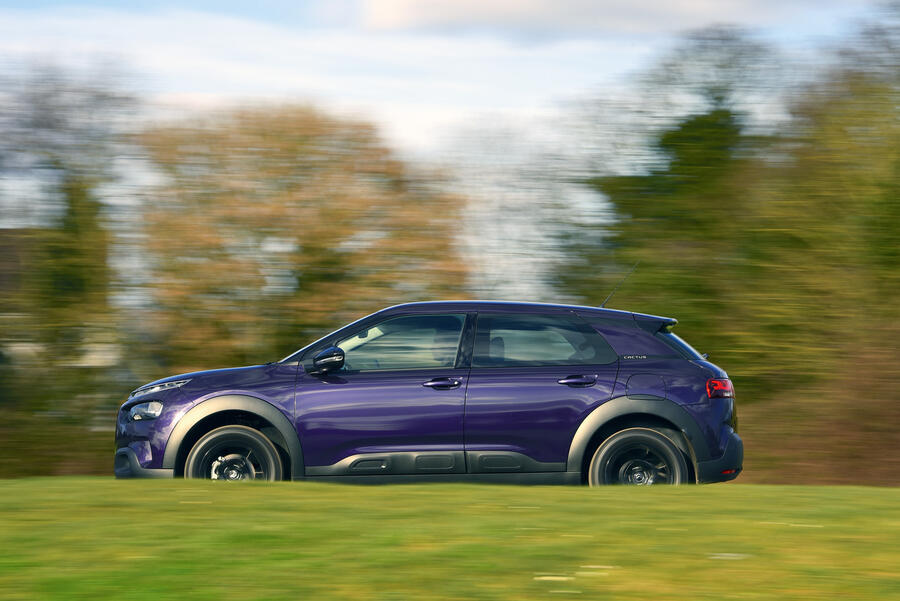A bit confusing, the history of the C4 Cactus. The first cuddly incarnation arrived in 2014 as a quirky, Airbump-laden small SUV. It was designed in the Citroën idiom of old to stand out from the crowd, but it also offered practical, comfortable and fuel-efficient motoring. It sold on looks alone, though, because it looked like nothing else and came in a range of bright colours that contrasted neatly with those protruding bumps along its flanks.
A facelift in 2018 ushered in a much sharper but less cute-looking Cactus, with Airbumps minimised and a much more mainstream approach, and in the process, it became marketed as a regular family hatch rather than an SUV. It was retired this year and its place was taken in the order books by the new C4, a car that, up until that point, had been a family hatch but was now marketed as an SUV. Clear? Good. Then let’s continue.
Click here to buy your next used C4 Cactus from Autocar
Well, first there was a range of frugal petrol and diesel engines on offer. Petrol-wise, there’s an 81bhp three-cylinder 1.2-litre and two turbocharged versions of the same unit making 109bhp or 128bhp. The only diesel initially was a 99bhp 1.6-litre, and it was replaced by a 1.5-litre (also with 99bhp) as part of the car’s facelift. Pre-facelift examples come in four different trim levels: Touch, Feel, Flair and Flair Edition. Touch gets a 7.0in touchscreen infotainment system, a DAB radio, a USB port and cruise control. Feel adds air conditioning, Bluetooth and a leather-trimmed steering wheel, plus gloss black exterior trim and body-coloured door handles. Flair adds plenty more kit, including sat-nav and a rear-view camera. Flair Edition gives you fancy seats and a panoramic roof.

Post-facelift cars get more safety kit – including emergency brake assist and lane departure warning – and come only in Feel and Flair trims. Feel carries on very much from what went before, but Flair comes with everything Flair Edition had, along with extra safety technology including automatic emergency braking, lane departure warning and speed limit recognition. Inside, the infotainment system on all cars gained Android Auto, Apple CarPlay and MirrorLink smartphone mirroring.

















Join the debate
Add your comment
"The glue on the bumper trim on some 2016 models might become unstuck". It seems a minor issue, but it is typical of Citroen quality engineering and control. My Citroen had plastic parts that made me feel ashamed regarding Citroen material engineers.
Do something, Stellantis!!!